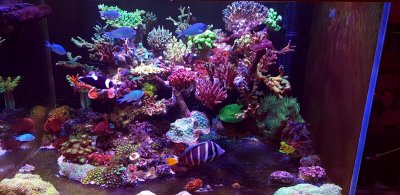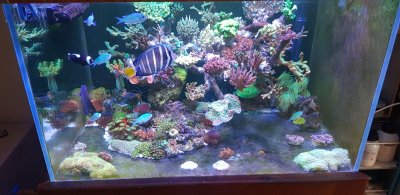- Joined
- Oct 11, 2018
- Messages
- 20
- Reaction score
- 11
Hi all,
I have 7 months 76 gallon tanks as below. My scape is very high and at the moment I don't have any position to place the sps frag. I intend to make a new dry scape, so i would like all of you give some advice with dry rock and dried old sand.
1. Taking the dry rock and old sand into the establised tank without cycling the rock (ofcourse there will be many problem are happened).
2. Taking the dried old sand into the tank but cycling the dry rock out side (using plastic box to cycle) in 2 weeks.
3. Cycling both of dried old sand and dry rock outside (using plastic box) in 2 weeks. Old sand at the bottom, using water changing from the main tank, T5 light, small wave maker, small pump and oxygen maker machine.
So which is the most suitable solution in these and why.
Thank all of you so much.


I have 7 months 76 gallon tanks as below. My scape is very high and at the moment I don't have any position to place the sps frag. I intend to make a new dry scape, so i would like all of you give some advice with dry rock and dried old sand.
1. Taking the dry rock and old sand into the establised tank without cycling the rock (ofcourse there will be many problem are happened).
2. Taking the dried old sand into the tank but cycling the dry rock out side (using plastic box to cycle) in 2 weeks.
3. Cycling both of dried old sand and dry rock outside (using plastic box) in 2 weeks. Old sand at the bottom, using water changing from the main tank, T5 light, small wave maker, small pump and oxygen maker machine.
So which is the most suitable solution in these and why.
Thank all of you so much.





















